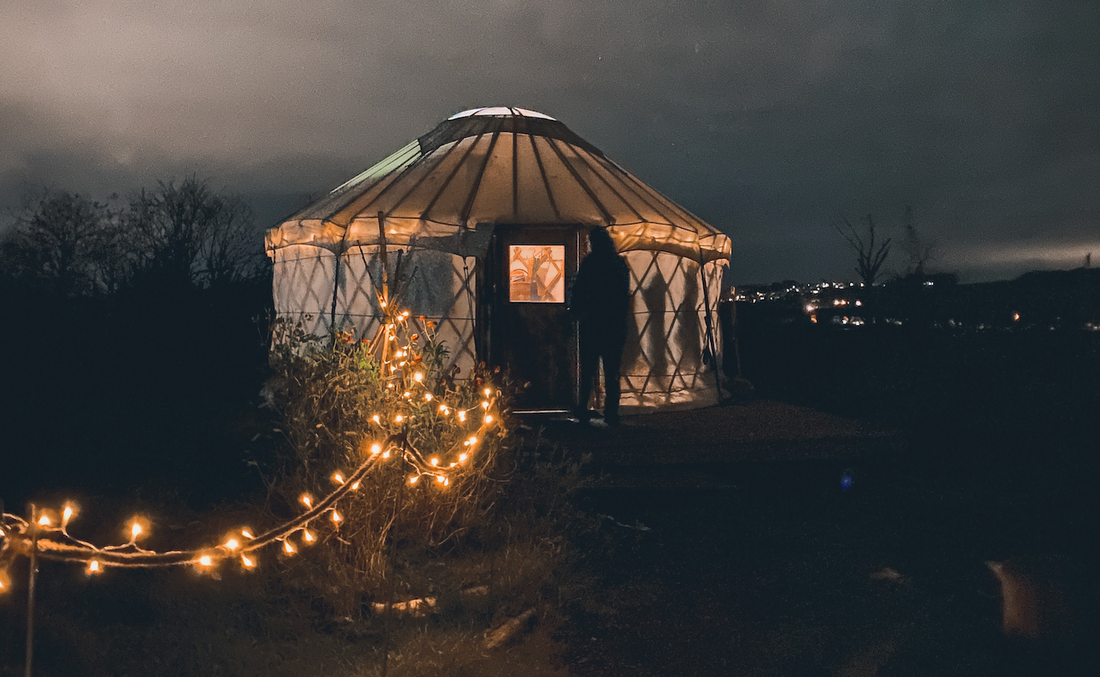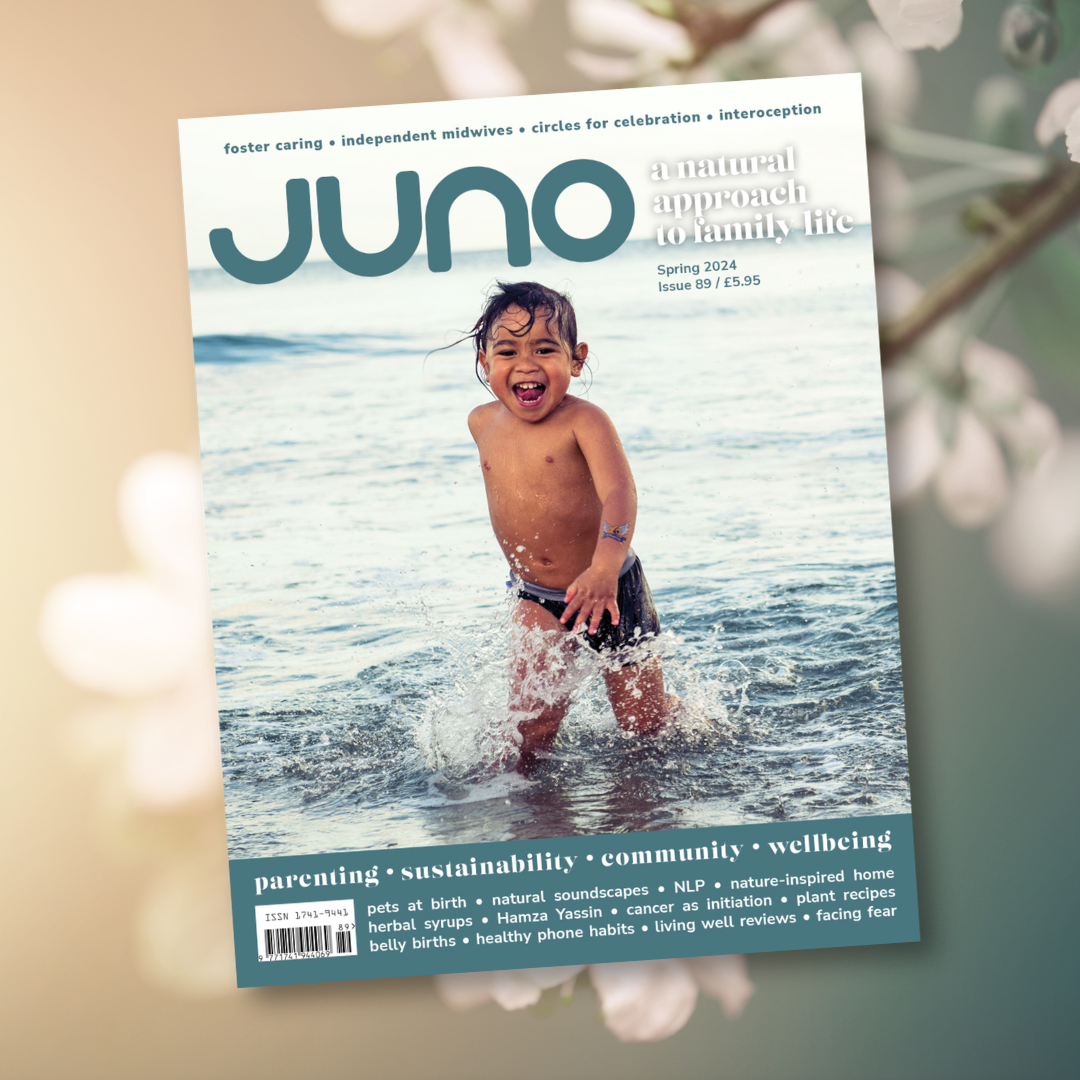Kith Homestead is our happy place. I’m sure you have one too. A place you return to time and time again, in all seasons and in all weathers. A place you take your family, friends and loved ones – the special people in your life. It’s these places you don’t tell ‘just anyone’ about, for the need to preserve them. These spaces aren’t your home though; they’re somewhere you can escape to, while still feeling the same comfort and safety.
Recently we’ve begun exploring the Homestead in the veil of darkness again. With the seasonal change, the shorter days give us a wonderful opportunity to head out in the magical golden hour and beyond. When we first talked about going out in the darkness, there was never an element of worry or anxiety, because we knew exactly where we were adventuring. We know the Homestead inside out: every root, undulation and branch. We know which way the path turns and where to dodge the tangling brambles, where to leap the mud puddle and where to watch our step on the slippery slopes. We know the best places to rest and where to see the stars twinkling. This is a place our souls know.
Over the last few years, the desire to find comfort in the outdoors has intensified. With the stress of the pandemic, more and more families have turned to nature. It’s given us all – adults and children alike – an opportunity to learn more about the world around us. Local routes and footpaths have been discovered (or rediscovered for some) as families enjoy the benefits of natural spaces beyond scripted playgrounds.1 We’ve connected with nature and found a comfort outdoors we so desperately needed. Having a sense of place, though, isn’t a new concept; it’s one that has long been researched by social scientists and psychologists.2 The theory of place attachment can be used to describe the belonging, freedom, security and relaxation we feel when we form bonds with a place.3
Now autumn is upon us, we can take all those beautiful feelings of security and step into a new set of family adventures, in the dark, from the autumn equinox until the spring equinox. In the spirit of full disclosure, pre-child, the dark definitely wasn’t my happy place. It’s not that I was afraid, it’s just that I wasn’t particularly comfortable in it. My husband shared a similar feeling, so much so that if we stayed in an unfamiliar room, he would often wake in the dark in full fight mode, ready to protect us from bears or intruders his brain had conjured up in his sleep. Our son is coming up to 4, and since he arrived, we’ve certainly had our share of night-time fun, like all parents. Hourly feeds in the newborn stage, awake at midnight for snuggles and just… up all night for no reason. Ah, the joys of parenthood! There’s a lot of time spent fumbling in the dark.
This year, I was ready for the autumn equinox. In fact, I leapt joyously when it arrived. It meant a new season of adventures was upon us. We love lanterns in our house, so now we’re in the season of darkening, all our lightemitting things come out to play. Candles lit for dinnertime, torches for bathtime, and lantern walks before bedtime. The most exciting activity though, is welcoming our friends to the Homestead for the evening.
I’m always conscious that everyone has different comfort levels, both in the outdoors and in the dark, so creating a collective base comfort level is my number one priority. Plunging straight from a car into the deep darkness is a surefire way of overloading a little one’s senses. So, instead, we gather at dusk, while there’s still enough light left in the day for our eyes to gradually become accustomed, for our hearing to become honed and our amazing vestibular system to step up to protect us.
As the evening light begins to fade, we start by coming together around the comfort of our fire, letting bodies breathe and settle. From there, the children head off to explore the spaces familiar to them, darting into dens made in the daylight and running freely in the field, on the hunt for crepuscular animals. It’s a completely different experience after twilight. Once the total darkness envelops us, we gather to light a candle each, sing songs and sip our hot chocolate, the glow of the firelight just enough to see one another. Once the last of the excited bodies begins to wilt, we begin our goodbyes. Often led by torchlight, we scoop up belongings lost to the darkness. Then it’s the car drive home, either with sleepy children or children bubbling with life. It’s always tricky to predict which way it’ll go.
Giving children the opportunity to experience the darkness in comfort is one of the simplest acts of psychological growth I can think of. As parents, we often overlook simple acts when we’re considering grand adventures – the epic camping trips or day-long hikes, the big outdoor gatherings or festivals of grand proportions. What I’m talking about here takes a little foresight to get right, but once you’re clued up on these simple steps, the possibilities are endless. It all begins with finding your special outdoor spot: the place you’re attached to and always come back from feeling fulfilled. Have Maslow’s hierarchy of needs in your mind as you prepare because, once you have your child’s basic needs met, the rest will flow beautifully.4
The steps below will guide you to making an experience that can be repeated time and time again:
- Identify your family’s outdoor happy place, somewhere they feel connected to.
- Check what time the sun sets and plan to get there around that time.
- Make sure everyone has had food before you leave and has been to the toilet before you start putting on layers.
- Talking of layers, layers are essential! If your child feels cold or uncomfortable, they won’t enjoy the experience. Have everyone dressed in their outdoor gear before you arrive. A top tip is having pyjamas on underneath outdoor gear for a quick transition to bed on your return home.
- Give your child a torch to hold. They need to be able to dictate where they want to adventure and what they choose to see. However, expect to have the light shined in your face for a big chunk of time because you are your child’s safety net. They will want to see you and, in the dark, that means shining a light on you.
- Choose a word of safety, a call, a sound or something to alert your child that you’re looking for them, or vice versa. You’re not likely to need this for a younger child as you’ll probably be with them, but you might for an older child who’s particularly adventurous.
- Have a bag of home comforts at hand, things which will draw your child close to you should you see they’re struggling with sensory overload. Remember, you are your child’s ultimate comfort blanket. When you’re able to offer them something that extends that comfort, they’re likely to be able to settle. A teddy, a pair of gloves or a mug of hot chocolate often work well.
- Keep it simple and follow their lead. For the first adventures, don’t plan too much and lower your expectations. You have years ahead of you with many, many more dark seasons to explore, so start small and build up to the epic adventures. This will be a first for your child and it will already feel pretty adventurous to them.
- Remember there may well be overwhelm. If everything goes to plan, you might find your child is having so much fun you struggle to get them home. Give them a heads up 10 minutes before you want to start heading home.
- Don’t forget to breathe into enjoying the experience. Once you’re well practised with the preparations, you can return to these adventures for years to come.
____
Lorna Norton lives with her husband and son in a little house they barely spend any time in. As a home-educating family, they’re mostly found on the land at Kith, tucked into woodland hideouts or playing at the river, taking learning away from four walls. Lorna is the founder of Kith Homestead, a holistic education space for families and individuals in Yorkshire. She’s an advocate for natural learning, self-directed education and child development. To fill up her own cup, Lorna rises early, finding the wee hours are her time for reading, working, doing handcrafts or writing. kithhomestead.com
____
References
1. Office for National Statistics, ‘How has lockdown changed our relationship with nature?’, April 2021, available from ons.gov.uk.
2. K.E. Foote and M. Azaryahu, ‘Sense of place’, Rob Kitchin and Nigel Thrift (Ed.) International Encyclopedia of Human Geography (Elsevier, 2009).
3. Leila Scannell and Robert Gifford, Robert, ‘The experienced psychological benefits of place attachment’, Journal of Environmental Psychology, 51 (2017).
4. Kendra Cherry ‘Maslow’s hierarchy of needs’, February 2022, available from verywellmind.com.
____
First published in issue 80 of JUNO. Accurate at the time this issue went to print.



